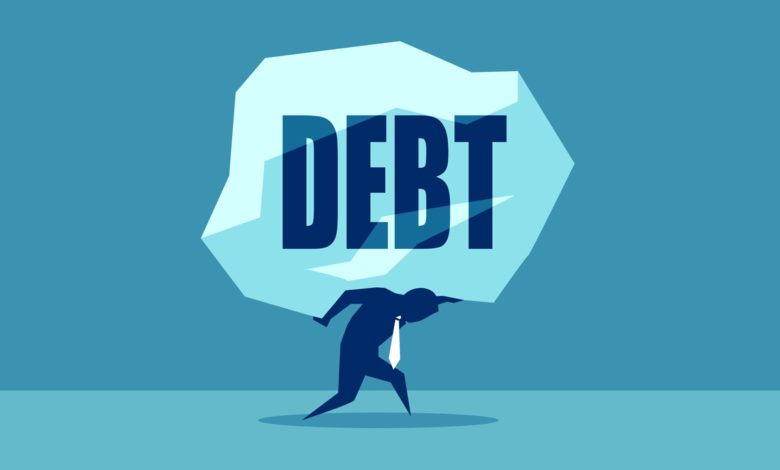Number of US Corporate Defaults Already Bigger Than Last Year

The number of corporate debt defaults in 2023 has already exceeded the total number of defaults last year.
According to data from Moody Investment Services, 55 American-based companies defaulted on loans through the first half of 2023. That was a 53% increase over the total number of defaults in 2022.
US companies accounted for the majority of worldwide defaults through H1. Globally, 81 firms failed to pay loan obligations.
Moody’s projects that corporate defaults will continue to surge with the default rate coming in at 4.7% globally. In the worst-case scenario, defaults could rise as high as 13.7%, surpassing the number of defaults in 2008.
A Deutsche Bank study projects defaults for US high-yield debt will peak at around 9% in late 2024. For comparison, the high-yield default rate was a mere 0.5% in 2021 and 1.3% in 2022.
The study predicts that a looming recession will create significant pain in the world’s credit markets, similar to the dot-com bust.
Corporate leverage is elevated. And global credit markets derive more of their revenue from manufacturing and the sale of physical goods than the real economy at large. Going forward, corporates will likely lose pricing power on their sale of physical goods, due to high inventory builds and a post-COVID demand shift from goods to services. But labor costs are likely to remain sticky, because of a shrinking working-age population and a desire for consumers to recoup nearly 2 years of negative real wage growth.”
What’s causing the rise in corporate defaults?
Rising interest rates coupled with tightening on lending.
Over the last 15 years, corporations could generally get financing for 4 to 6%. The interest rate has surged to between 9 and 13%.
Meanwhile, economist Peter St. Onge said banks are “battening down the hatches” and holding on to bailout money instead of lending it out.
That credit crunch means not only do we get bankruptcies like in any recession, on top of that, we get a lending wall that cuts off even the healthy businesses. Of course, their jobs go down with them.”
Central Banks Are Popping Bubbles
Central banks incentivized a borrowing spree with more than a decade of artificially low interest rates. But when price inflation caught up with the monetary inflation, central banks were forced to hike rates. Now, rising interest rates are popping bubbles blown up by loose monetary policy.
As ZeroHege put it, “The aggressive monetary-tightening policies of the Federal Reserve have been a major factor in pushing many companies into default by making it harder to pay back their loans.
Central banks pushed rates to zero in the wake of the Great Recession and some banks, including the European Central Bank and the Bank of Japan took rates negative. Despite some efforts by the Federal Reserve to normalize rates in the mid to late 2010s, it never succeeded and had already started cutting rates due to shakiness in the economy before COVID. During the pandemic, central banks doubled down on their easy money policies.
The whole point of this monetary policy was to incentivize borrowing to “stimulate” the economy.
It worked.
Global debt hit a record $300 trillion at the end of 2022, according to data from S&P Global. That equals 349% leverage against global GDP and $37,500 of average debt for each person in the world.
Since 2000, non-financial corporate debt across America and Europe has grown from $12.7 trillion to $38.1 trillion, a 200% increase. Meanwhile, the percentage of US speculative-grade issuers of “B-” ratings and below doubled, to 36%, in September 2022 compared with September 2007.
Most people just assumed a low interest rate environment was the new normal. But in the wake of the COVID stimulus, price inflation finally caught up with the central banks, forcing them to raise interest rates.
Low-interest rates are the mother’s milk of a global economy built on easy money and debt. With interest rates rising, the bubbles are starting to pop.
What nobody seems willing to say out loud is that this problem falls squarely on the shoulders of governments and central banks. They implemented policies intended to incentivize the accumulation of debt. They created trillions of dollars out of thin air and showered the world with stimulus, unleashing the inflation monster. And now they’re trying to battle the dragon they set loose by raising interest rates. This will inevitably pop the bubble they intentionally blew up.
All of this was entirely predictable.
Get Peter Schiff’s most important gold headlines once per week – click here – for a free subscription to his exclusive weekly email updates.
Interested in learning how to buy gold and buy silver?
Call 1-888-GOLD-160 and speak with a Precious Metals Specialist today!
Buka akaun dagangan patuh syariah anda di Weltrade.
Source link






